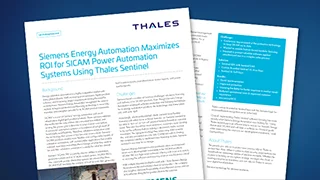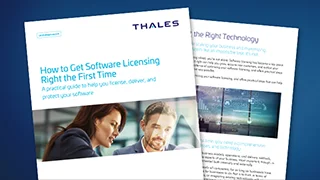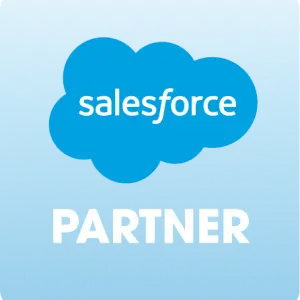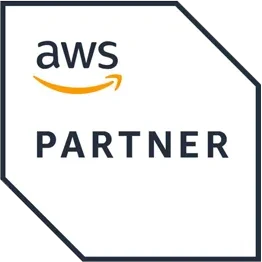What is Software Copy Protection?
Software copy protection is an essential technology used by developers to prevent the unauthorized duplication and distribution of software. Copy protection safeguards software creators' and publishers' intellectual property (IP), ensuring they can profit from their work.
Copyright protection laws grant the creators exclusive rights to their software, but without active copy protection, these rights are hard to enforce. Preventing software piracy used to involve tracking down and preventing physical copies of software from reaching the market. But now, most pirated software is distributed online, so it requires different prevention and enforcement methods. That's why software copy protection and licensing technologies are necessary means for enforcing legal software use.
Sentinel Envelope - Comprehensive Software Protection
Our advanced security capabilities allow you to protect your product from reverse engineering, tampering, piracy, and counterfeit licensing.
Why Do You Need Software Copy Protection?
1. To Protect Your Revenue
You lose revenue every time someone uses your software without authorization. When users share or download software without paying, it directly undercuts your bottom line. Robust software copy protection ensures that every legitimate user has paid for access, keeping your business model sustainable.
2. To Protect Your Code
Without safeguards, bad actors can reverse-engineer your code, inject malicious elements, or steal proprietary features. Strong copy protection acts as both a lock and an alarm system, making tampering and theft significantly harder.
3. To Protect Your Brand
Pirated, or even counterfeit, versions of your software can affect your reputation. Software can circulate with bugs or malware, and customers may not even realize they're asking you to provide support for versions you never authorized. The damage to your brand’s reputation can be long-lasting and costly. Software copy protection keeps unauthorized versions out of circulation, so you stay in control of product quality.
Common Challenges of Software Copy Protection
While the benefits of software copy protection are clear, security is one of the most complicated things for companies to address internally. Here’s why:
Lack of specialized expertise
Software copy protection requires niche security expertise—something most companies don’t have in-house. Hiring or developing this level of talent is expensive and time-consuming, especially when software security isn’t your core business. Even experienced generalist developers often lack the specialized knowledge needed to outpace determined software crackers. For many companies, it’s simply not practical to build and maintain this capability internally. Instead, resources are better spent on driving innovation and improving the core product rather than building up a dedicated security function from scratch.
Evolution and updates
Both software and piracy are constantly evolving and software crackers are also constantly developing new methods to bypass software copy protection. This, with the notion that software needs to be updated regularly, means that software copy protection technologies need to be built to adapt. That means the security project you set out to build is not a one-and-done investment. It will require maintenance and evolution over the course of your product life.
User experience
Aggressive software copy protection measures can sometimes harm the user experience. Too many steps to sign in, limitations on network connections, or getting accidentally locked out are all inconvenient for users. It can be particularly challenging to find solutions that maintain the correct balance.
Key Software Copy Protection Methods
There are several different software copy protection methods that developers can use to protect their products. Although legal copy protection applies to almost all software, the technical methods vary depending on the type of product, your customer demographics, your security needs, and the business models you adopt.
Legal Software Copy Protection
Software copyright gives creators the legal right to control how their software is used and shared. To enforce those rights in practice vendors rely on software licensing. A strong license enforcement system helps maximize revenue by striking the right balance between access and control. It grants access to authorized users based on criteria like user count, subscription period, or included features, as specified in the license agreement.
Of course, that only works for users who are worried about legality. To protect against players with more malicious intent, licensing software must be combined with technological protection.
Technology For Software Copy Protection
- Software licensing and License Keys:
One of the most common methods used for software copy protection is requiring users to enter a license key to activate the software. These serial numbers are typically generated by the software developer and are usually unique to each user or device. While this method is simple and widely used, it has its limitations. Serial numbers and license keys can be shared or cracked, which is why it's important to use a solution from a tried and tested provider. - Encryption and Obfuscation:
Software-based copy protection techniques like code obfuscation, encryption, and white box cryptography secure the source code itself, making it difficult to access and understand, so it can't be easily cracked or tampered with. - Authorization:
Although people may consider illegally sharing a license, they're less likely to share personal passwords or devices. Requiring a unique username and password or a digital fingerprint that is tethered to a particular device makes it significantly less likely that a license will be shared or copied. - USB Dongles with Smartcard Technology:
USB dongles are one of the most commonly used forms of hardware-based protection. These small, portable devices are connected to the USB port of the computer, and the software requires the presence of the dongle to run. The dongle stores encryption keys and other data that verify the authenticity of the software. If the dongle is removed or tampered with, the software will stop working. Most modern dongles are based on smart card technology which gives them robust encryption features and allows for authentication between the license software application and the dongle.
How Thales Can Help: The Sentinel’s Suite of Software Protection and Monetization Solutions
Thales Sentinel offers a wide range of copy protection software and hardware solutions to help companies protect their IP, manage licenses, and track software usage. Sentinel solutions combine both software-based and hardware-based copy protection
- Sentinel Software Protection
Thales's industry leading Envelope technology contains a large number of protection tools, including encryption, code obfuscations, white box cryptography and more. It wraps software executables and libraries to protect them from tampering, reverse engineering, and unauthorized execution. This enables automatic, easy to apply protection without requiring changes to source code. - Sentinel Software Licensing
Thales’s award winning Sentinel LDK solution underpins both hardware and software-based protection. It ensures software runs only under the right conditions and according to defined license terms, offering granular control over usage rights.- Sentinel HL
A hardware-based license solution using secure USB dongles. It offers strong physical enforcement of licenses and is ideal for high-security or offline environments where hardware-level security is required. When combined with Envelope, HL provides amongst the highest levels of software copy protection available. - Sentinel SL and CL
Allows vendors to provide users with digital license keys. These enable secure, flexible software licensing for software distributed in virtual, cloud-connected, or on-premises environments.
- Sentinel HL
- Sentinel Entitlement Management
Thales’s premier Entitlement Management system is a key middleware, connecting your back-office systems with your customer deployment. It enables automated provisioning, streamlined activation, and provides visibility and control throughout the customer lifecycle. With EMS, you can manage customer entitlements across products, versions, features, and deployment models. What’s more the EMS product catalog allows you to configure (bundle) features or services into sellable modules and assign each module a license model—like subscription or usage-based—and set enforcement type, either using on Sentinel LDK enforcement or any other license enforcement type. - Sentinel Usage Intelligence
Provides deep visibility into software usage and license behavior. It can help detect anomalies, reduce the risk of misuse or piracy, and inform future packaging or monetization strategies.





